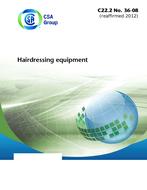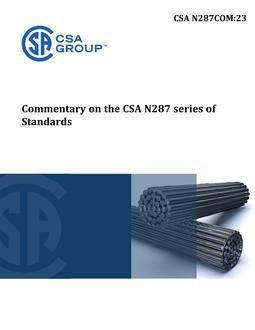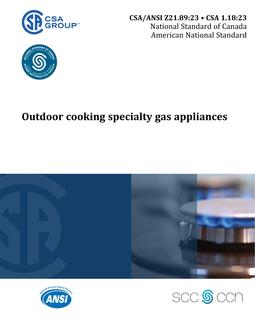
CSA C22.2 NO. 36-08 (R2012)
- Comments Off on CSA C22.2 NO. 36-08 (R2012)
- CSA
Click here to purchase
This PDF includes Update No. 1
Preface
This is the seventh edition of CSA C22.2 No. 36, Hairdressing equipment. It is one of a series of Standards issued by the Canadian Standards Association under the Canadian Electrical Code, Part II. It supersedes previous editions published in 1989, 1986, 1979, 1972, 1954, and 1936.
1 Scope
1.1
This Standard applies to household and commercial electrical hairdressing equipment of the portable, pedestal, and table-mounted types, including hair dryers, hair steamers, combs, curlers, and the attachments with which they are sold, rated at 250 V and less, designed for use in nonhazardous locations in accordance with the Rules of the Canadian Electrical Code, Part I.
1.2
This Standard applies to portable multi-voltage equipment that is intended to operate on more than one nominal system voltage and to be
(a) supplied with a cord set(s) or a power supply cord suitable for one intended operating voltage and an operator-accessible voltage-selecting means;
(b) used with direct plug-in devices, such as power supplies with built-in selector switches; or
(c) supplied with a cord set(s) terminating at one end in an attachment plug suitable for the intended operating voltage and at the other end in a unique connector that automatically establishes the correct voltage when connected to the machine, and no operator voltage-selecting means.
1.3
This Standard applies to equipment, including integral heaters and attachments, intended to be applied directly to the head or hair.
1.4
This Standard does not apply to heaters or ovens used to heat cordless hairdressing tools.
1.5
This Standard does not apply to equipment intended for treatment of the skin or scalp.
1.6
This Standard specifies requirements for ungrounded, cord-connected, double-insulated hairdressing equipment (see Clause 8).
1.7
In CSA Standards, “shall” is used to express a requirement, i.e., a provision that the user is obliged to satisfy in order to comply with the standard; “should” is used to express a recommendation or that which is advised but not required; “may” is used to express an option or that which is permissible within the limits of the standard; and “can” is used to express possibility or capability. Notes accompanying clauses do not include requirements or alternative requirements; the purpose of a note accompanying a clause is to separate from the text explanatory or informative material. Notes to tables and figures are considered part of the table or figure and may be written as requirements. Annexes are designated normative (mandatory) or informative (non-mandatory) to define their application.
Product Details
- Edition:
- 7th
- Published:
- 03/01/2008
- ISBN(s):
- 9781554366743
- Number of Pages:
- 70
- File Size:
- 1 file , 1.1 MB
- Product Code(s):
- 2418826, 2418826



